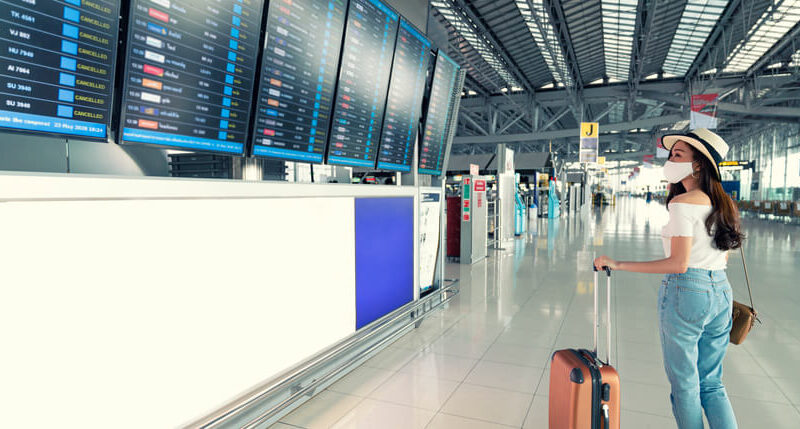Coronavirus has changed our lives overnight. There are hundreds of businesses around the world that have either entirely changed their business models or are slowly adapting to make themselves more aligned with the changing world. One of these industries is air travel.
As the world is slowly opening its doors to welcome back people on flights, there is an entire list of SOPs that need to be followed to stay safe from the virus. There are, however, certain technologies under progress that are bound to make air travel higher tech as time unfolds.
Let’s walk you through some of the technological additions that we will see on or future flights!
1. Extensive Use of Robots
Even before the coronavirus, robots had started to take over several functions that were once performed by humans. With the outbreak, there has been a lot of stress on disinfecting surfaces time and time again. There has also been an increase in the use of ultraviolet (UV-C) for disinfecting surfaces as it is effective in destroying the DNA and RNA of the virus. Due to this discovery, the wavelength of light is used to sterilize hospitals, airports, offices, etc.
While the UV-C light is effective in killing the virus, direct contact can lead to certain diseases like cancer. This is why it is highly advised to have robots that throw the light on surfaces to disinfect them. Several ongoing trials are testing these robots. The light thrown is extremely bright and can damage the human eye; therefore, it is only directed towards the surface that needs to be disinfected.
Additionally, robots are being used by airlines to maintain the cleanliness of the airplane as well. Robots are responsible for cleaning between the aisles, carpet cleaning, picking up the trash, and even fluffing the headrests.
2. Touchless Systems
Advanced face recognition systems are already being used in many parts of the world. With the coronavirus outbreak, airlines are beginning to invest in touchless R&D more than ever to use touchless systems, especially in busy places such as airports, etc. You may not need to hand over your passport to the airport staff; instead, your face will be scanned through a hi-tech biometric device.
The devices have sensors that pick up unique features such as the forehead shape or the nose bridge. Moreover, these devices are smart enough to recognize faces even when half of them are covered with face masks! It is not only the boarding system that will get this upgrade. The gates, bag drop-off areas, and other kiosks will also have biometric devices installed to minimize any physical interaction between the people and airport staff.
Other than the obvious advantage of not having to interact, these devices bring convenience to the travelers and the airport authorities alike. The touchless systems are also being implemented inside the airplane where the passengers don’t have to press the button to call the stewardess; instead, they can raise their hand to activate a sensor that will send them what they need.
3. Mandatory Health Screening
With the current situation, it seems like health screening might become part of standard airport checks. Several airports already have temperature checking facilities at the entrance through hand-held thermometers. To further improve the process, passengers can also get their temperature checked through walk-through thermal systems that detect the temperature of a person by sensing the amount of heat the person is emanating. Temperature screening has become a mandatory process at airport checkpoints and might even be seen in the future. However, there is a disagreement among experts who believe that these sensors may not be able to pick asymptotic patients (those who don’t show symptoms).
Bottom Line
Air travel might have recontinued in a lot of countries, but there is a wave of paranoia and fear that has captivated people. There are still a lot of people who are still not confident to travel. Such measures, as listed above, can help to restore the confidence of passengers and make air travel safer for all. The airline may be successful in implementing the technologies, but there is still a long way till things can get back to normal, and it just makes us wonder whether we will be able to go back to the carefree days before the virus.

